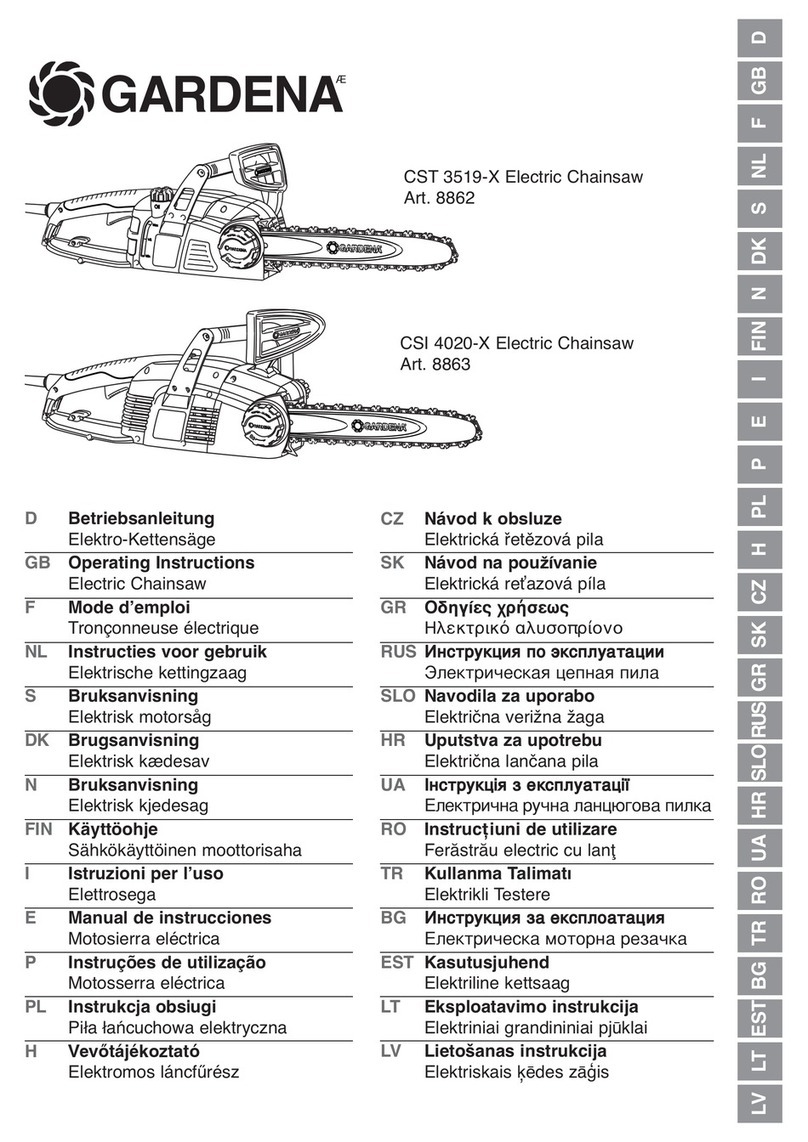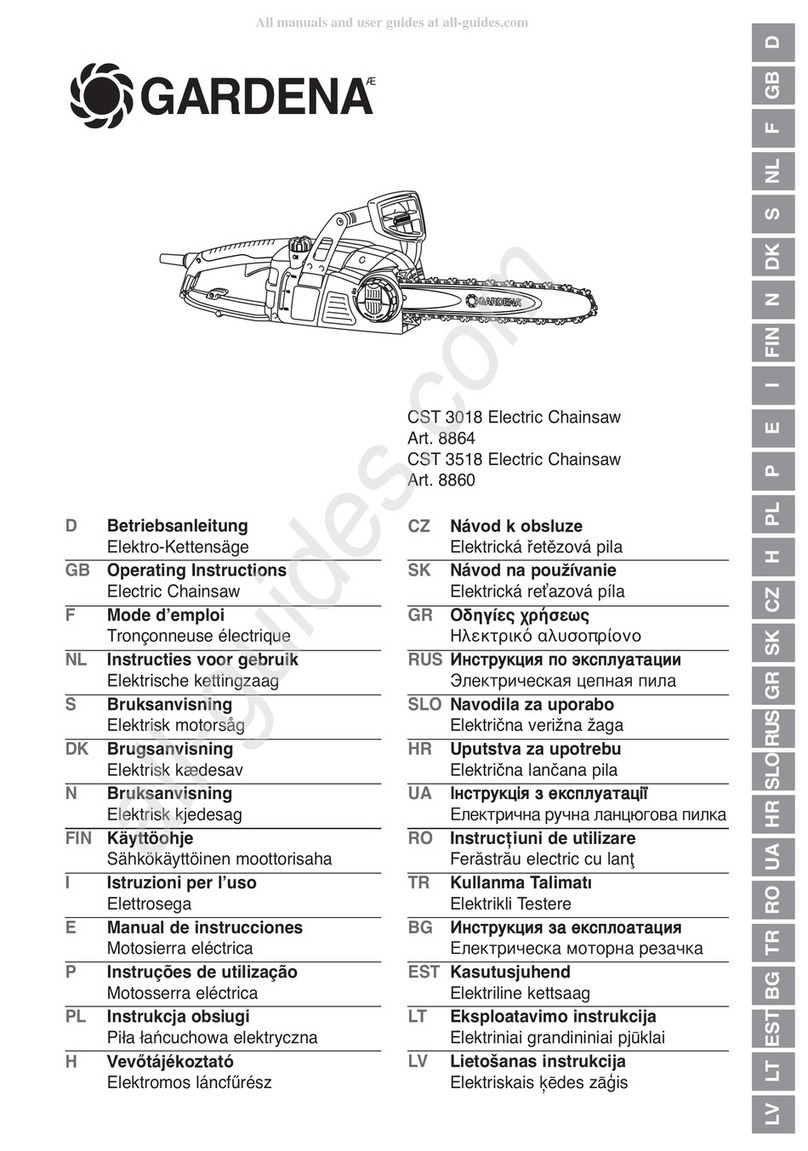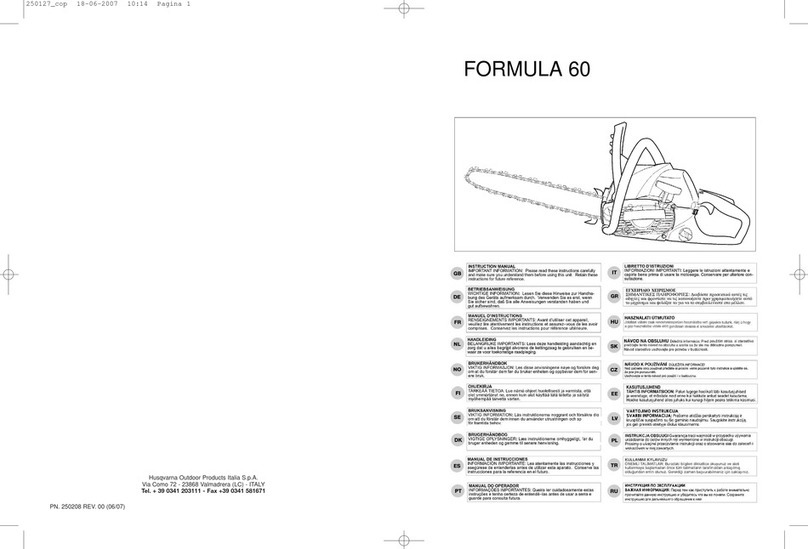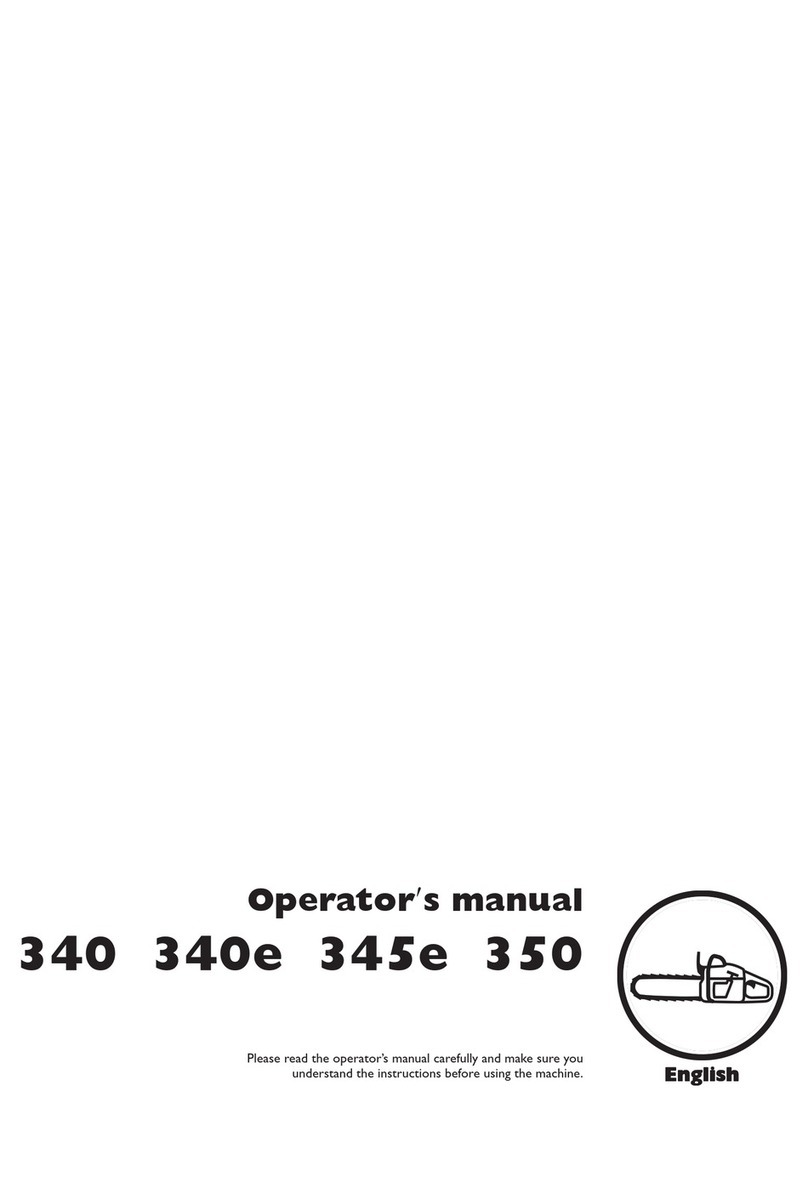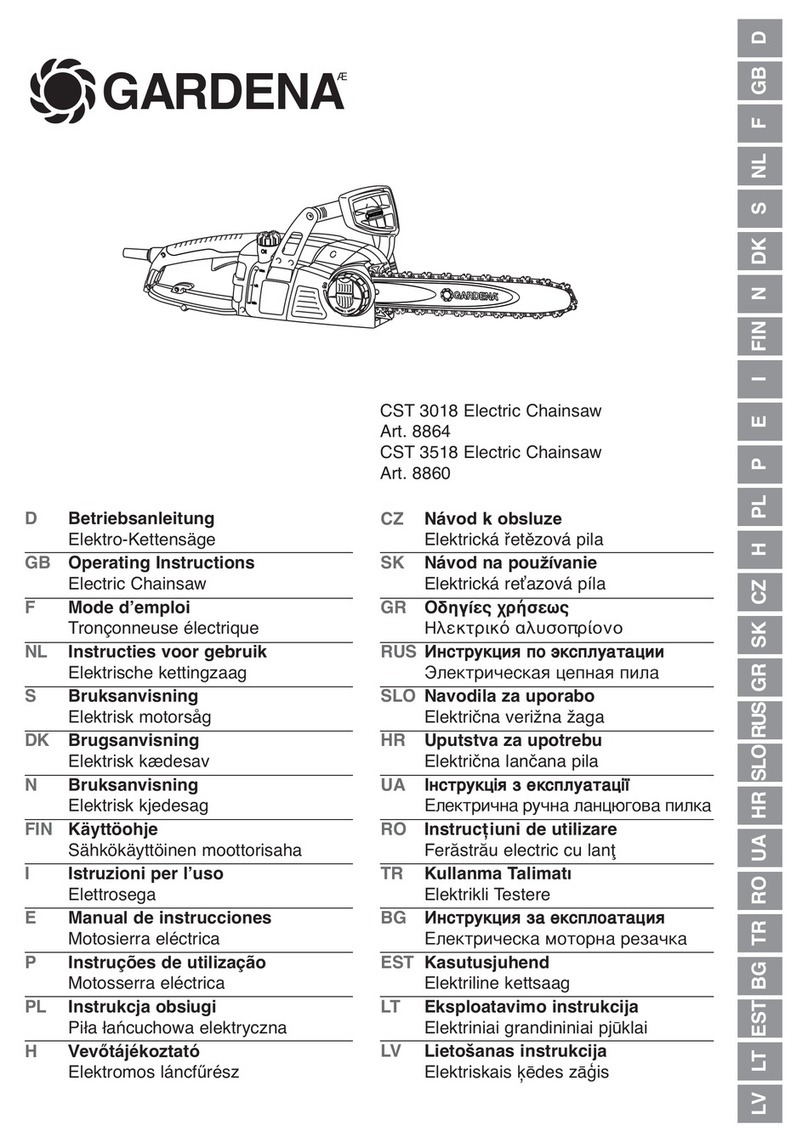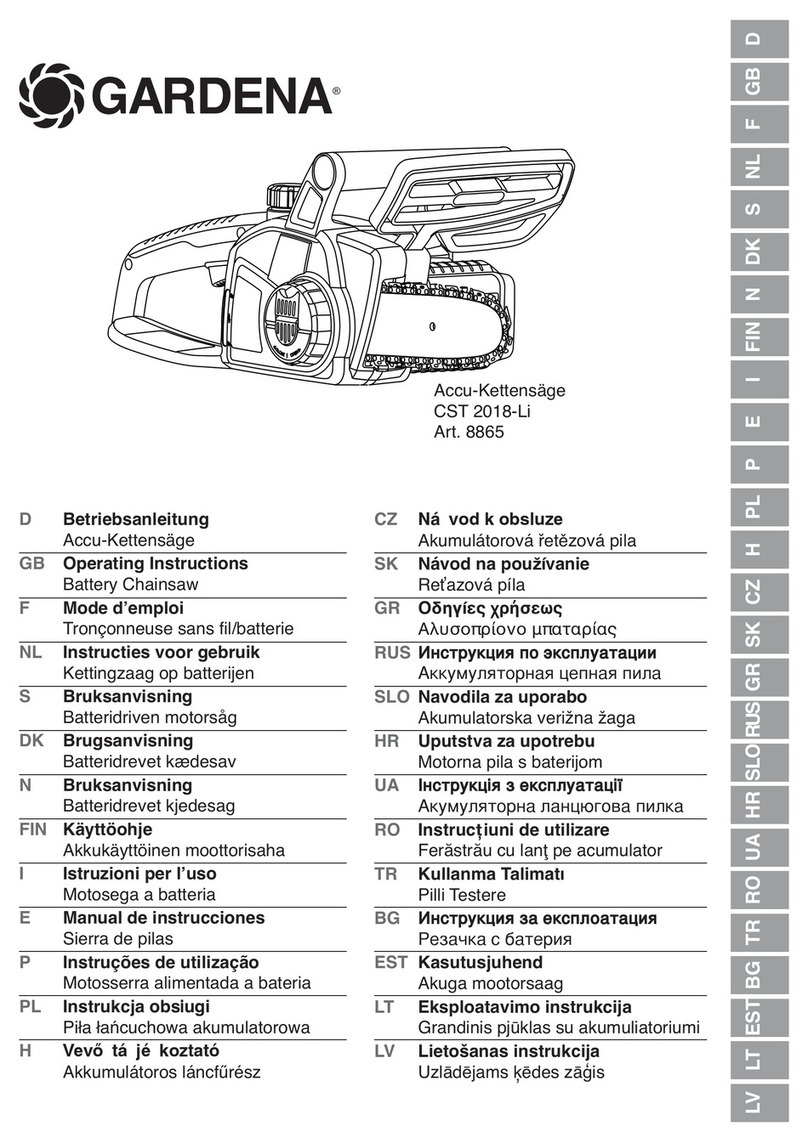D
WICHTIGE INFORMATION
Übersetzung der englischen
Originalbetriebsanleitung
.Bitte vor dem
Benutzen des Gerätes durchlesen und gut
aufbewahren.
GB
IMPORTANT INFORMATION
Original Instructions. Read before use and
retain for future reference.
F
RENSEIGNEMENTS IMPORTANTS
Instructions d’origine.A lire avant usage et
à conserver pour référence ultérieure.
NL
BELANGRIJKE INFORMATIE
Oorspronkelijke instructies.Leest u deze
informatie voor het gebruik en bewaar ze
voor toekomstige raadpleging.
S
VIKTIG INFORMATION
Originalinstruktioner. Läs anvisningarna
före användningen och spara dem för
framtida behov.
N
VIKTIG INFORMASJON
Originalinstrukser. Les bruksanvisningen
nøye før bruk og oppbevar den for senere bruk.
FIN
VIGTIGE OPLYSNINGER
Alkuperäiset ohjeet.Du bør læse
brugsanvisningen før brug og gemme til
senere henvisning.
I
INFORMAZIONI IMPORTANTI
Istruzioni originali.Leggere prima dell’uso
e conservare per ulteriore consultazione.
E
INFORMACIÓN IMPORTANTE
Instrucciones originales.Léase antes de
utilizar y consérvela como referencia en el
futuro
P
INFORMAÇÕES IMPORTANTES
Instruções Originais. Leia antes de utilizar
e guarde para consulta futura
VIGTIGE OPLYSNINGER
Originale instruktioner.Du bør læse
brugsanvisningen før brug og gemme til
senere henvisning.
SK
GR
PL
H
CZ
DK
UWAGA
Oryginalne Instrukcje.Zapoznać się z
treścią niniejszej instrukcji przed użyciem i
zachować ją do dalszego użytkowania
urządzenia.
RUS
FONTOS INFORMÁCIÓ
Eredeti Utasítás.Használat előtt olvassa
el, és tartsa meg későbbi felhasználásra.
DŮLEŽITÁ INFORMACE
Originální pokyny.Než začnete stroj
používat, přečtěte si pozorně tento návod a
uschovejte jej pro další použití v budoucnu.
DÔLEŽITÉ INFORMÁCIE
Pôvodné pokyny.Pred použitím si
prečítajte nasledovné informácie a odložte
si ich pre budúcu potrebu.
ΣΗΜΑΝΤΙΚΕΣ ΠΛΗΡΟΦΟΡΙΕΣ
Aρχικές οδηγ
ί
ες.∆ιαβάστε αυτό το φυλλάδιο
πριν από τη χρήση της συσκευής και
φυλάξτε το για µελλοντική αναφορά.
ВАЖНАЯ ИНФОРМАЦИЯ
Иcxoдныe инcтрyкции. Прочитайте перед
тем, как включить триммер, и сохраните
для дальнейшего использования.
SLO
POMEMBNA INFORMACIJA
Originalna navodila.Preberite pred
uporabo in shranite za prihodnjo uporabo.
HR
VAŽNE INFORMACIJE
Originalne upute.Pročitati prije upotrebe i
sačuvati za buduće osvrte.
UA
ВАЖЛИВА ІНФОРМАЦІЯ
Оригінальні інструкції.Прочитайте
перед початком роботи і збережіть для
подальшого використання.
RO
MANUAL DE INSTRUCŢIUNI
Instrucţiuni originale.Inainte să folosiţi
mașina de tuns pentru prima oară, citiţi cu
atenţie manualul de instrucţiuni pentru a-i
înţelege conţinutul.
TR
ÖNEMLİ BİLGİLER
Orijinal Talimatlar.Kullanmadan önce
okuyunuz ve ileride başvurmak üzere
saklayınız.
BG
ВАЖНА ИНФОРМАЦИЯ
Оригиналните инструкции.очетете
преди употреба и запазете за бъдещи
справки
EST
OLULINE TEAVE
Algsed juhised.Enne seadme
kasutuselevõtmist lugege kasutusjuhend
läbi ning säilitage see tuleviku tarbeks.
LT
OPERATORIAUS INSTRUKCIJŲ
RINKINYS
Pagrindinės instrukcijos. Perskaitykite šį
instrukcijų rinkinį labai atidžiai, kad pilnai
suprastumėte turinį, prieš pradėdami
naudoti vejos/žolės pjovėją.
LV
SVARĪGA INFORMĀCIJA
Sākotnējās instrukcijas.Pirms lietošanas
izlasiet un saglabājiet turpmākām uzziņām.
